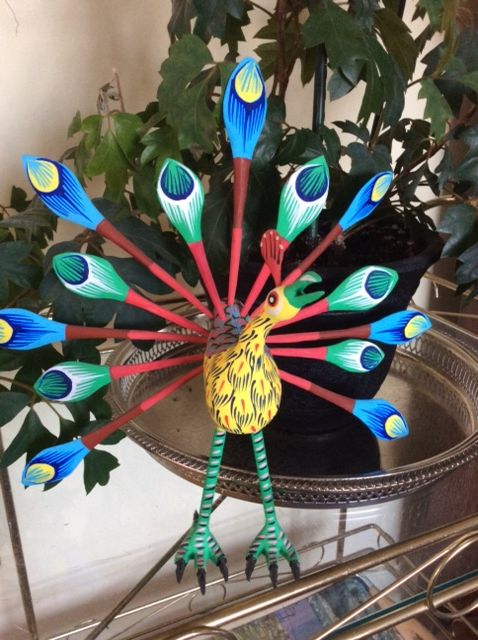More about markets and some Spanish words to challenge you on this very stormy Monday in Saskatchewan. The temperature has dropped suddenly, houses across the street are blurry shapes in the swirling snow, and the violent west wind is blasting drifts across our yard.
In contrast to the white view outside, I'm thinking about tianguis, the colourful traditional markets in the towns surrounding the city of Oaxaca.
Each market happens on a particular day of the week, so check the calendar and find a bus. Here's the schedule as I remember it.
- Monday you go to Teotitlán del Valle to see rugs and textiles dyed with natural pigments and woven by master Zapotec weavers
- Tuesday is Atzompa for pottery made from locally harvested clay
- Wednesday is Etla, known for quesillo, the original stringy cheese sold in flat ropes wound into balls
- Thursday is Zaachila if you need a goat from the livestock market
- Friday is Ocotlán, for handicrafts and everything else
- Saturday is the giant and over-whelming Central de Abastos in the city where restauranteurs and storekeepers buy their supplies for the week
- Sunday is my favourite, the lively Tlacolula market where locals start with a family breakfast and foreigners come to enjoy the colourful outfits of village women. These are the only Indigenous women I've run into who don't like to have their picture taken. I tried to be respectful but couldn't resist just a few furtive shots.

By the way, I love the names of the towns around here. Especially after I finally learned to pronounce them. It was ages before I could spit out those Tl's in Tlacolula and Tlalixtac and Tlacochahuaya. Then Capulalpam de Méndez, Cuajimoloyas, Jalatlaco, San Bartolo de Coyotepec, and San Martín Tilcajete. It took many repetitions to get my brain and tongue coordinated, now they're fun to say. I like the markets but I like saying the Spanish and Indigenous words just as much.
Staying on the topic of outdoor browsing, in 2011 my classmate Sonya and I took a bus to Zaachila to chat with the goats and the local farmers at the weekly livestock market, definitely off the beaten tourist path.
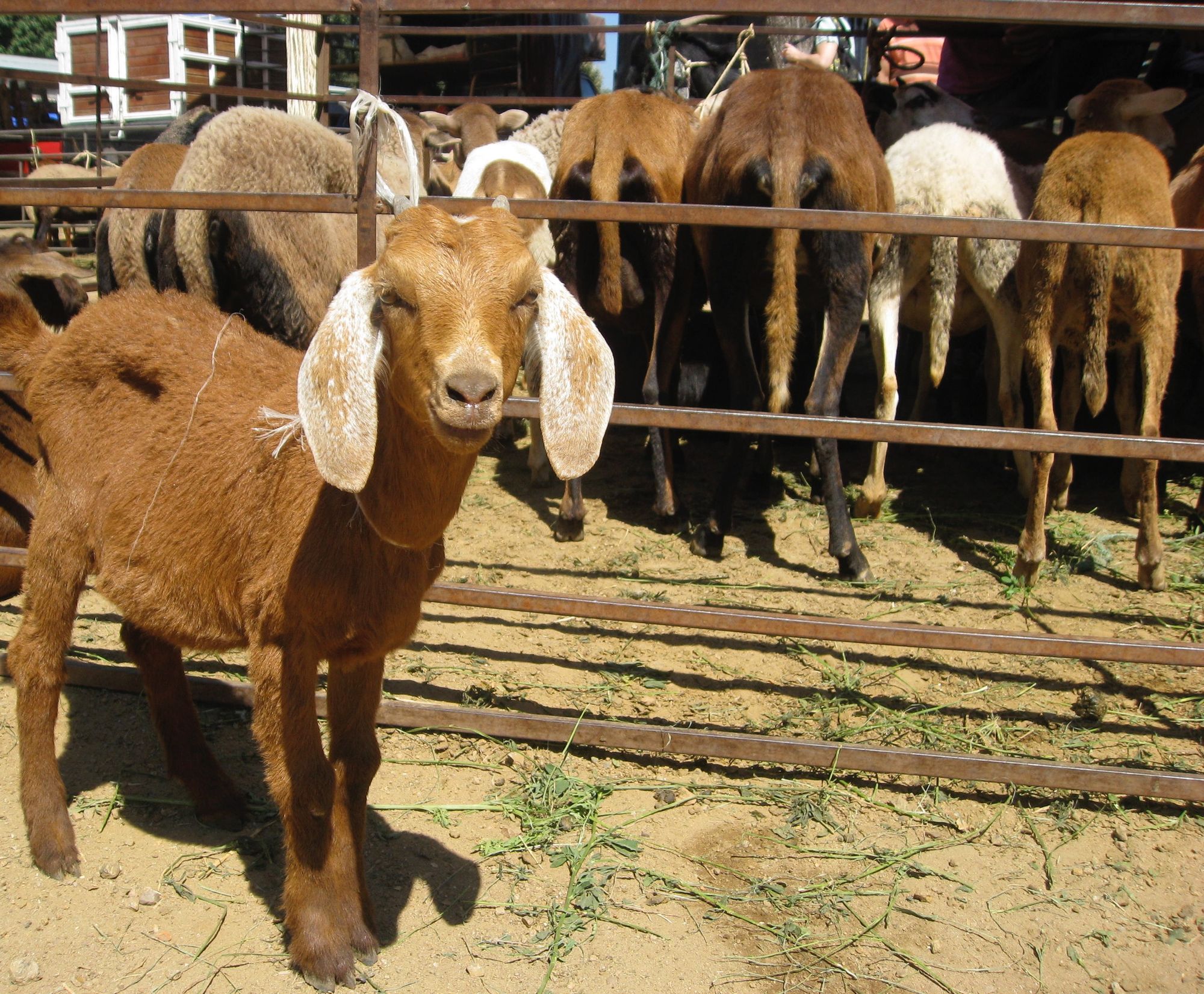
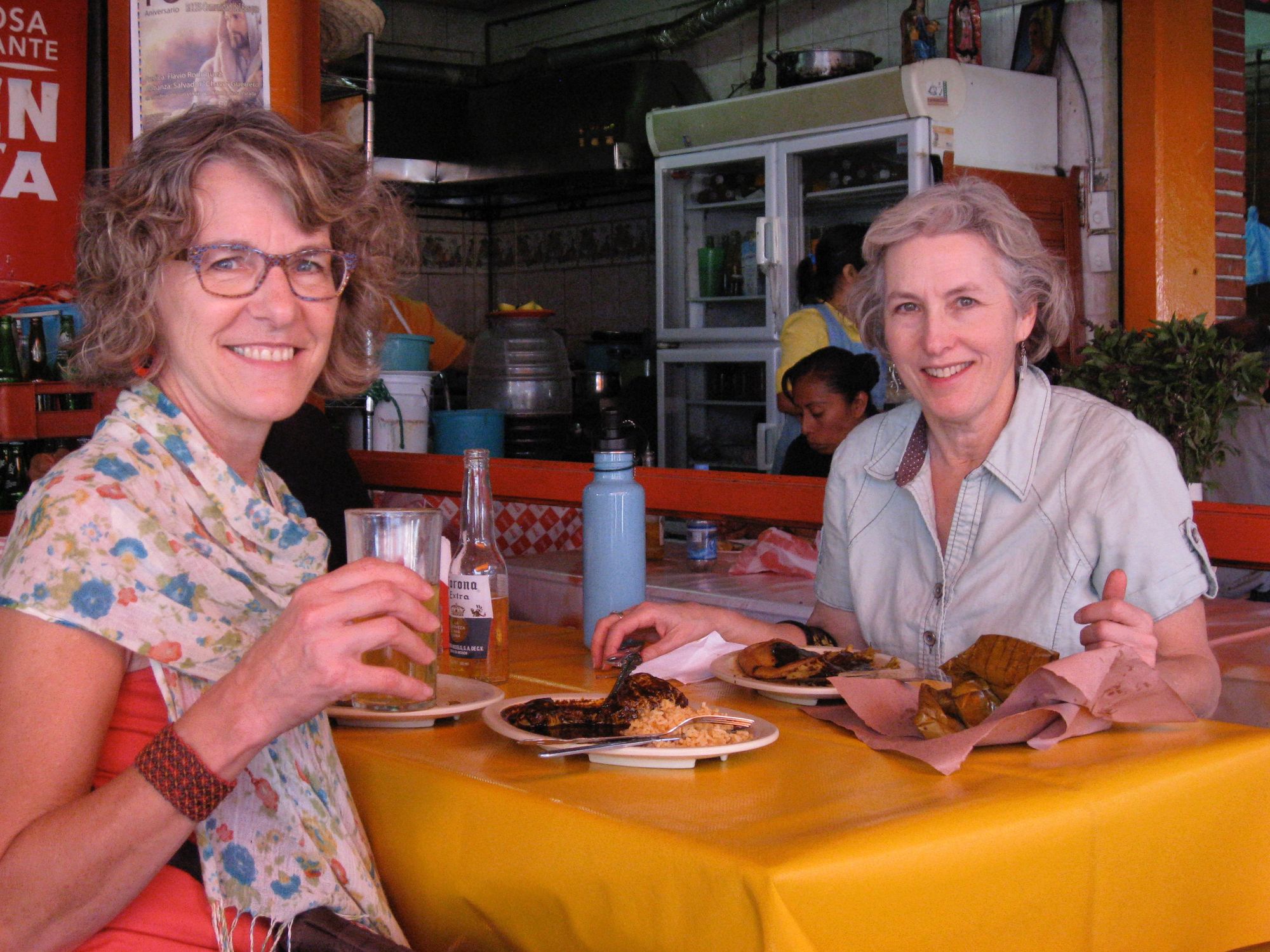

Next door to the mooing and maa-aing animals these two gringas are enjoying their chicken and rice served in a pool of rich mole negro sauce, fresh warm tortillas on the side. (It's lunch time and I'm craving that flavour right now as I look out at my blustery front window.)
Spicy. Savoury. Sweet. Complex. Mysterious even.
If you're wondering what mole negro is exactly, it's a complicated and intensely flavoured sauce that famously requires more than 25 ingredients to make. They may include guajillo, ancho, and mulato chiles, tomatoes, tomatillos, onion, bread, tortilla, garlic, peanuts, almonds, raisins, pumpkin seeds, sesame seeds, cinnamon, allspice, cloves, anise, cumin, sugar, plantains, pork lard, chicken broth, avocado leaves if you happen to have them handy, and of course unsweetened Oaxacan chocolate.
Then you toast, roast, boil and steep, fry and grind, blend, puree, simmer and stir. It's the most labour-intensive of all the moles (there are six other colours) and the most delicious. The paste I've bought in specialty stores here isn't even close to the rich complex flavour of the real thing, which is the state dish of Oaxaca and is best prepared by someone's grandmother.
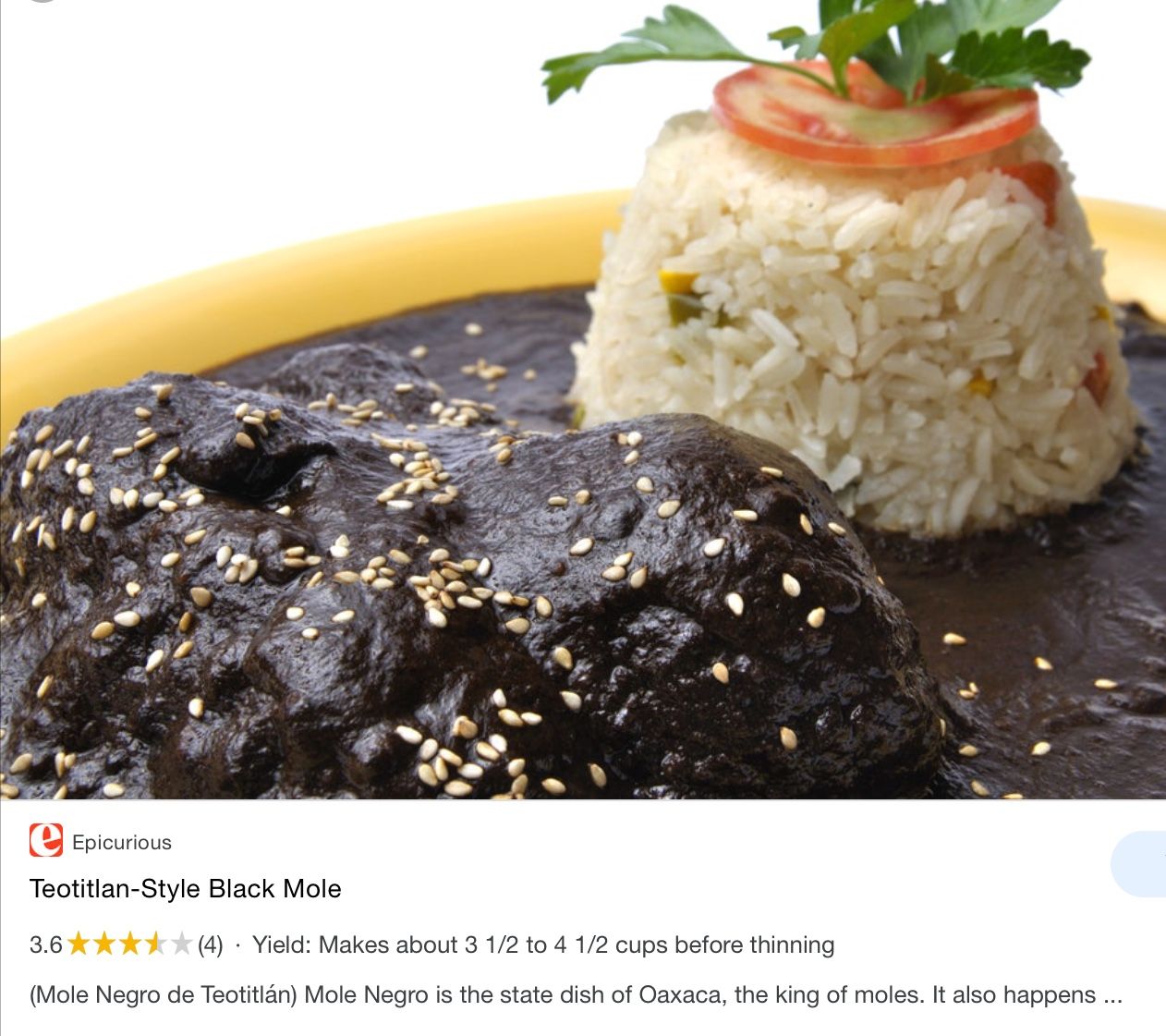
Another choice market food is a memela, or as the women cooking them to perfection call them endearingly, memelitas. This common Oaxacan specialty is made with a corn tortilla freshly cooked on a griddle called a comal, then slathered with rendered pork lard called asiento, a layer of frijoles or refried beans, strings of quesillo cheese, and topped with avocado, tomato and salsa. They're served everywhere and delicious every time.


It's not in the food category but here's a photo I like of my favourite tree in the world, or at least in Mexico... a glorious jacaranda in a relaxing afternoon scene at the Tlacolula market. In February or March the normally green trees transform into a frothy mass of delicate purple flowers.
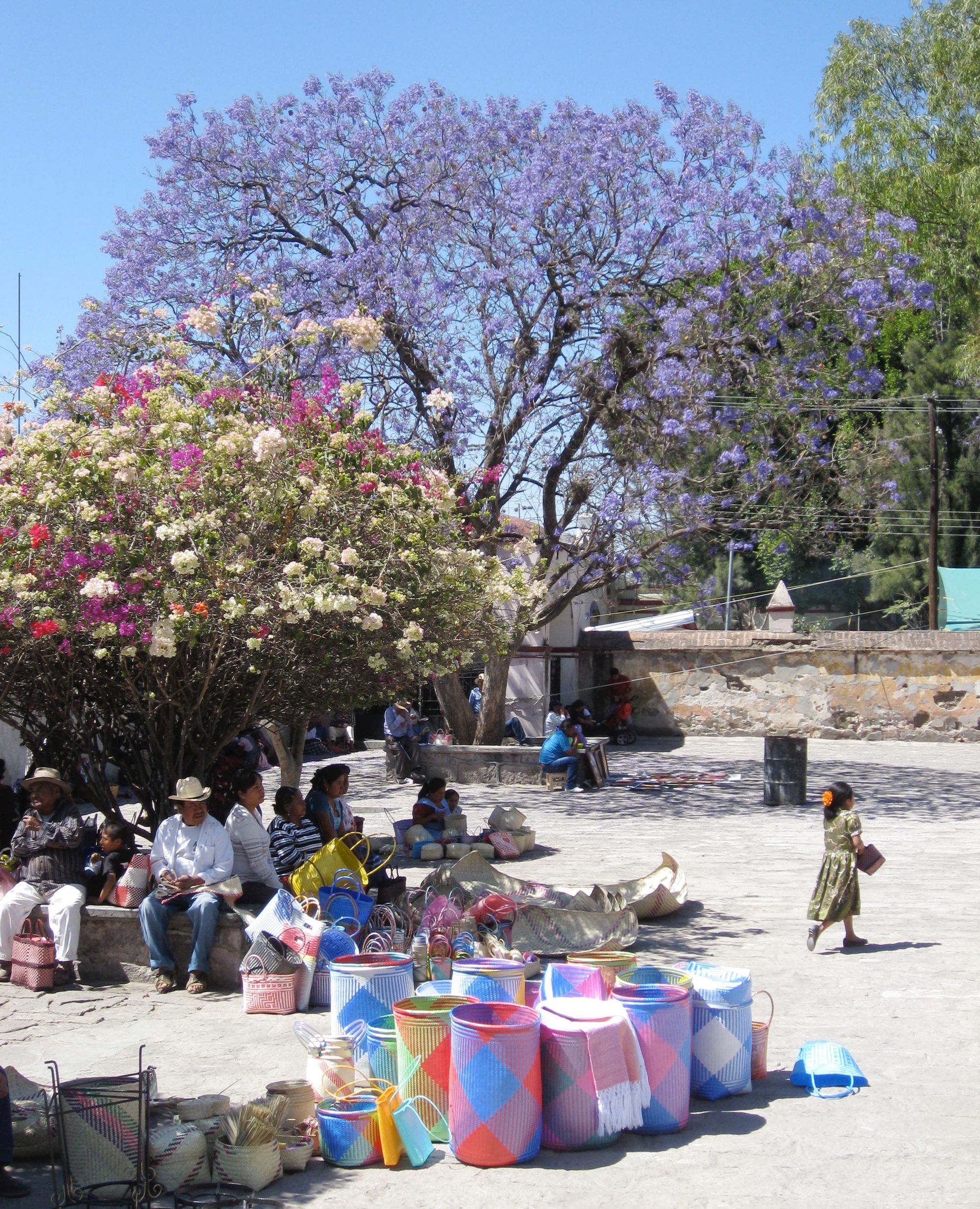
I like the engaging little figure striding out of this picture with her basket and an orange flower in her hair.
Markets aren't only about food of course. If you like shopping for artesanía, handmade goods, this part of Mexico will be your heaven. I've bought my share of souvenirs over the years and that will be another post as I hunt through my photos, or maybe my house, to document the treasures I couldn't resist.
